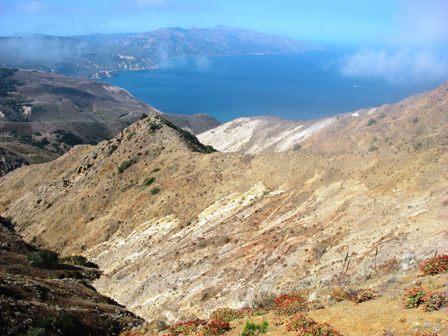
In 2010, the traditional Ecogeomorphology course was put on hold due to a sabbatical leave for one of the professors. Keeping the tradition of multi-disciplinary, water-based study alive, eight graduate students from Geology, Hydrologic Sciences and Civil and Environmental Engineering tackled island geology and geomorphology, with Santa Cruz Island as a case study. Field reconnaissance was conducted by foot and by kayak in September 2010. Due to access restrictions, fieldwork focused on the eastern end of Santa Cruz Island. During Fall Quarter 2010, the students developed papers that examined the geologic history, neotectonics, and geomorphology of the island. This website contains a volume of these papers along with field logs and photographs. The goal of this effort is to inform (and encourage) future geology field trips to the island.
Islands, particularly those that are relatively small and occur in active tectonic settings, form ideal natural laboratories for the study of terrestrial and nearshore processes. The small size of islands, when coupled with rapid uplift, leads to the development of numerous dynamic, low-order drainages. These drainages display complex feedback relationships between hillslope and fluvial systems as they undergo rapid adjustment to changing climatic and tectonic conditions. Small islands also have exceptionally high shoreline lengths relative to their area. Because of this, sea level changes and regional wave regime play a critical role in island geomorphology.
The Northern Channel Islands of the Southern California Bight offer a unique opportunity to study the interplay between terrestrial and nearshore processes in an active tectonic setting. These islands are part of the western Transverse Ranges, formed by regional deformation and rotation adjacent to the San Andreas Fault. Santa Cruz Island is the largest of these islands. Its geologic mosaic records the evolution of the Transverse Ranges and the San Andreas system. The island is undergoing uplift and deformation, with associated rapid drainage and hillslope evolution. A flight of deformed and dissected marine terraces, dating back at least 400 ka, record the interplay between Pleistocene eustatic sea level changes and tectonic uplift. Finally, a NW-dominated winter wave regime is sculpting the shoreline of the island and constructing a modern wave-cut bench.
